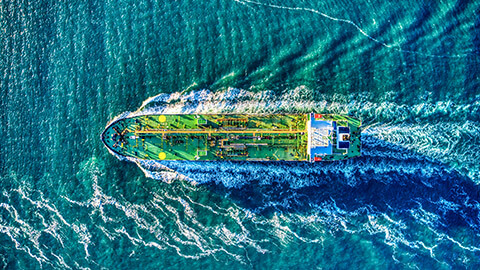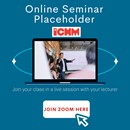The world has become a global village. International trade is the oldest and the most important component of building international businesses. We will look at theoretical frameworks of international trade and how organisations conduct marketing activities during this topic. We will take a look at some of the internal and external factors that organisations need to focus on when conducting marketing activities in a global environment.
Welcome to Topic 9: Marketing in a Global Environment. In this topic, you will learn about:
- Theories of international trade
- Marketing mix
- PESTEL analysis
- National institutions and international trade.
These relate to the Subject Learning Outcomes:
- Describe the fundamental frameworks and strategies for competing successfully in a global economy.
- Outline how global businesses are affected by the type of environment (legal, political, economic, financial and social-cultural) they operate in.
- State the practical factors that impact on global business activities in regard to technology, supply-chain management, marketing and human resources.
Welcome to your pre-seminar learning tasks for this week. Please ensure you complete these prior to attending your scheduled seminar with your lecturer.
Click on each of the following headings to read more about what is required for each of your pre-seminar learning tasks.
To assist in the development of assignment 3, please start researching and developing a draft for your global expansion report. Research the country of your choice via the website “Our World in Data” had developed into a very valuable data depository relevant to analysing international business. Should you require help, use the 'BUS100 Assessment Q&A Forum' or reach out to your lecturer. You can access the discussion forum activities by clicking on the links in the topic. You can also navigate to the forum by clicking on 'BUS100 Subject Forum' in the navigation bar for this subject.
The following chapter examines the topic of trading internationally and the key theories of international trade. Read pp: 117-127 from Chapter 5: Peng, M. & Meyer, K 2019, International business, Cengage Learning.
Identify at least three (3) key take outs from this chapter and write them in your reflective journal. These notes will assist you during the scheduled seminar.
You can access the reflective journal by clicking on ‘Journal’ in the navigation bar for this subject.
Read the article, “This is the impact of the Coronavirus on business”, which highlights the pitfalls of interdependencies in global markets. It also focuses on the impact of COVID-19 on business, as well as why and how businesses should invest in pandemic resilience.
Write at least three (3) key take outs in your reflective journal.
The COVID-19 pandemic caused the largest and fastest decline in international flows in modern history, including significant impacts on trade, foreign direct investment and international travel. Read the article, “Will Covid-19 Have a Lasting Impact on Globalization?” and identify the five (5) key drivers of globalisation trajectory. Write your answers in your reflective journal.
Read through this week’s topic content.

Theories of international trade
The resources and capabilities of an organisation are key factors in determining if the organisation has a competitive advantage or not. Applied to international trade, this assumption suggests that where organisations produce goods and services with a competitive advantage in overseas markets, they should export those products.
The theories of international trade describe the mechanisms to achieve international competitive advantage. We will look at the following seven (7) international trading theories in more detail.
- Theory of mercantilism
- Absolute advantage
- Comparative advantage
- Factor endowment theory
- Product life cycle
- Strategic trade
- National competitive advantage.
Theory of mercantilism

The theory of mercantilism is a “theory that holds that the wealth of the world (measured in gold and silver) is fixed and that a nation that exports less would enjoy the net inflows of gold and silver and thus become richer” (Peng & Meyer 2019, p.124). This means that if the world’s worth was fixed, then the largest possible share of wealth could be accumulated by maximising exports and limiting imports via tariffs.
Absolute advantage
The theory of absolute advantage “suggests that under free trade, each nation gains by specialising in economic activities in which it has absolute advantage” (Peng & Meyer 2019, p.124). For example, Australia specialises in the beef and wheat trade because of Australia's climate, soil, and land size.
Comparative advantage
Comparative advantage is a “theory that focuses on the relative (not absolute) advantage in one economic activity that one nation enjoys in comparison to another” (Peng & Meyer 2019, p. 126). When looking at international trade, it refers to one country producing products more cheaply or easily than other countries.
Factor endowment theory
The factor endowment theory explains “the extent to which different countries possess various resources (factors), such as labour, land and technology” (Peng & Meyer 2019, p.126). For example, India has many call centres compared to western countries because they have an abundance of human labour (the factor).
Product life cycle
The product life cycle is a “theory that accounts for change in the patterns of trade over time by focusing on produce life cycles” (Peng & Meyer 2019, p.130). Every product has three (3) life cycles, including:
- New
- Maturing
- Standardised.
Strategic trade
Strategic trade is a “theory that suggests that strategic intervention by governments in certain industries can enhance their odds for international success” (Peng & Meyer 2019, p.131). The industries that are affected tend to have high upfront costs, high entry barriers and are highly capital intensive, such as airlines. Governments intervene so that these firms are not driven out of business.
National competitive advantage
National competitive advantage is a “theory that suggests that competitive advantage of certain industries in different nations depend on four aspects that form a ‘diamond’” (Peng & Meyer 2019, p. 132). This theory focuses on why specific industries are competitive internationally and why others are not.
The following table provides a summary of both the classic theories and the modern trade theories.
| Classic Theories | Main points | Strengths and influences | Weaknesses and debates |
|---|---|---|---|
| Mercantilism (Colbert 1600s-1700s) |
|
|
|
| Absolute advantage (Smith 1776) |
|
|
|
| Comparative advantage (Ricardo 1817) |
|
|
|
| Factor endowments (Heckscher 1919; Ohlin 1933) |
|
|
|
| Modern Theories | Main points | Strengths and influences | Weaknesses and debates |
| Product life cycle (Vernon 1966; Hirsch 1975) |
|
|
|
| Strategic trade (Brander, Spencer, Krugman 1980s) |
|
|
|
| National competitive advantage of industries (Porter 1990) |
|
|
|

Marketing mix
When an organisation steps into international markets, it is important to complete an internal analysis of the organisation. This analysis helps the organisation reach consumers effectively, providing them with a clear and consistent message about the offering, the brand and the business in general.
If an organisation’s offerings are tangible goods, analysis must be carried out on the 4Ps. The four (4) Ps have been provided in the following list and figure.
- Product
- Price
- Promotion
- Place.
The seven (7) Ps
If the organisation provides services, the analysis should cover the 7Ps. The seven (7) Ps include the 4Ps, as mentioned previously, and the following three (3) additional factors:
- Process
- People
- Physical evidence.
Let us look at each of the 7Ps in more detail.
Product
Product refers to the offering the business presents to the target market. Products that are tangible, physical items that can be bought or sold are typically referred to as ‘goods’. Intangible offerings, which are more about an experience or interaction than a physical item, are referred to as ‘services’.
Price
Price refers to the amount charged for the product. Price decisions must include considerations about production costs, perceived value and competitiveness to ensure the business makes and overall profit.
Promotion
Promotion includes all the activities a marketing department undertakes to inform consumers about the organisation’s products and to encourage potential customers to buy these products (Kotler & Armstrong 2020).
Place
Place refers to where are how the product is distributed to consumers.
Process
Process includes all the steps and actions involved in delivering a service.
People
People include all individuals who play a part the delivery of the product and thus influence the consumer’s perceptions; namely, the organisation’s personnel, the customer and other customers in the environment (Kotler & Armstrong 2020). People are particularly important when the product is a service.
Physical evidence
Physical evidence is the environment in which the service is delivered, where the organisation and consumers interact and any tangible components that facilitate performance or communication of the service. Examples of physical evidence include buildings, equipment and logos.

PESTEL Analysis
When venturing into new markets, especially international ones, it is also important to do an external environment analysis. One common analysis method is called a PESTEL analysis. During the PESTEL analysis, all the macro environmental factors are taken into consideration. The aim is to assess how each of the factors influences business performance (pestleanalysis 2015).
There are six (6) influences that are analysed in the PESTEL framework. The following figure illustrates each influence.
It is important to consider all six (6) factors are interdependent. The following are details of each influence in the PESTEL framework.
- Political
- Government stability
- Tax Policy
- Economic
- Economic growth
- Inflation
- Social
- Income distribution
- Demography
- Technological
- International influences
- Tech transfer
- Environmental
- Environmental restrictions
- Climate change
- Legal
- Regional laws
- Court system
Learning task: Reflection
Conduct some additional research on PESTEL analysis and reflect on the following questions:
- What is a PESTEL analysis?
- How can a PESTEL analysis be used?
- Why is a PESTEL analysis important?
Write your answers in your reflective journal and be ready to discuss during the scheduled seminar.
National institutions and international trade
It is important to appreciate how economic and political institutions influence international trade and to do so, we must assume that the roles of the game are the same in every country. The rules of the game are often created by nation-states and can end up being barriers to international trade. That is because policies are designed to protect a domestic industry. Let us take a closer look at the policies that affect international trade and their purpose.
Tariff barriers
There are two (2) broad types of trade barriers:
- Tariff barriers
- Non-tariff barriers (NTBs).
Tariff Barriers
Tariffs are taxes imposed by a country’s government on products that are imported into or exported out of that country. Import tariffs, taxes imposed on imports tend to be major tariff barriers for international trade, making it very expensive for an organisation to deliver its product in a different country. Tariff barriers are reduced by the various trade agreements that are negotiated between countries (Peng & Meyers 2019).
Non-tariff barriers
Non-tariff barriers are all factors other than taxes that make international trade more difficult. Non-tariff barriers include factors such as:
- subsidies
- import quotas
- export restraints
- local content requirements.

We have now looked at what determines the success and failure of firms’ exports around the globe. It is evident economic theories suggest, that successful exports are generated by a firm with the resources and capabilities that make them competitive over international rivals. Yet, there are political policies and regulations, known as the ‘rules of the game’, that protect the domestic industries, firms and individuals. This is to ensure that the country, as a whole, is not worse off.
Knowledge check
Complete the following two (2) tasks. Click the arrows to navigate between the tasks.
Key takeouts
Congratulations, we made it to the end of the ninth topic! Some key take outs from Topic 9:
- There are classic and modern theories of international trade.
- Classic theories include:
- Mercantilism
- Absolute advantage
- Comparative advantage
- Factor endowments.
- Modern theories include:
- Product life cycles
- Strategic trade
- The ‘Diamond model.’
- Classic theories include:
- A PESTEL analysis includes analysing the:
- Political
- Economic
- Social
- Technological
- Environmental factors
- Legal.
- International trade can be complex and there are rules of the game that must be followed.
Welcome to your seminar for this topic. Your lecturer will start a video stream during your scheduled class time, you can access your scheduled class by clicking on ‘Live Sessions’ found within your navigation bar and locating the relevant day/class or by clicking on the following link and then click 'Join' to enter the class.
Click here to access your seminar.
The learning tasks are listed below, these will be completed during the seminar with your lecturer. Should you be unable to attend, you will be able to watch the recording which can be found via the following link or by navigating to the class through ‘Live Sessions’ via your navigation bar.
Click here to access the recording. (Please note: this will be available shortly after the live session has ended.)

In-seminar learning tasks
The in-seminar learning tasks identified below will be completed during the scheduled seminar. Your lecturer will guide you through these tasks. Click on each of the following headings to read more about the requirements for each of your in-seminar learning tasks.
After reading about PESTEL analysis and completing your pre-seminar reflective task, be ready to discuss the theory and application of the PESTEL analysis.
After completing the pre-seminar learning tasks, be ready to discuss the theories of international trade and tariff barriers.
Welcome to your post-seminar learning tasks for this week. Please ensure you complete these after attending your scheduled seminar with your lecturer. Your lecturer will advise you if any of these are to be completed during your consultation session. Click on each of the following headings to read more about the requirements for each of your post-seminar learning tasks.
Each country has different specialisations in importing and exporting goods and services. Select a country and research their trade statistics. Which product categories have seen large increases or declines in exports of imports in recent years? Why?
Share your post to the BUS100 Subject Forum, Topic 9: Forum Activity 1 and comment on the post of at least one (1) of your peers.
Start to conduct research and gather sources for Assessment 3. Discuss your findings and any concerns you have with your lecturer.
Each week you will have a consultation session which will be facilitated by your lecturer. You can join in and work with your peers on activities relating to this subject. These session times and activities will be communicated to you by your lecturer each week. Your lecturer will start a video stream during your scheduled class time, you can access your scheduled class by clicking on ‘Live Sessions’ found within your navigation bar and locating the relevant day/class or by clicking on the following link and then click 'Join' to enter the class.
Click here to access your seminar.
Should you be unable to attend, you will be able to watch the recording which can be found via the following link or by navigating to the class through ‘Live Sessions’ via your navigation bar.
Click here to access the recording. (Please note: this will be available shortly after the live session has ended.)

- Dearin & Associates n.d. Choosing the right market: International market entry barriers, International Business Accelerator
- Kadence International 2022, What is a market entry strategy, Kadence International
References
- Kotler, P & Armstrong, G 2020, Principles of marketing, 18th edn., Pearson.
- Peng, M & Meyer, K 2019, International business, 3rd edn., Cengage Learning EMEA.
- PESTLE Analysis 2020, PESTLE analysis: SWOT and business analysis tool, https://pestleanalysis.com/

